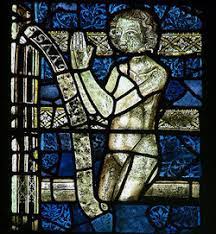The Lady of Glamorgan

Lee Swanson
December 2, 2022Throughout the No Man is Her Master series, the lives of the fictional characters, such as Christina and Trudi, are interwoven with those of actual people.
One such person is Eleanor de Clare, known by the sobriquet The Lady of Glamorgan. In the series, she is the aunt of Lady Cecily, who travels to London to join Eleanor in serving as a lady-in-waiting to Queen Isabella. Although she only plays a small part in the series, her real life is much more central to the history of the 14th century.
Eleanor was born on October 3rd, 1292, at Caerphilly Castle in Glamorgan, Wales. She was the daughter of Gilbert de Clare, who held the earldoms of Hertford, and Gloucester, and Joan, Princess of Acre. She was also the granddaughter of the king, Edward I.
In May 1306, she married Hugh le Despenser, the Younger. It is obvious she was favored by her grandfather, as Edward I granted her a dowry of £2,000. She soon bore Despenser a son, which they named Hugh, followed by eight more children.
But Eleanor was more than a bearer of children. In January of 1316, the Welsh besieged Caerphilly Castle. Despite having only a vastly outnumbered garrison, the castle held out for nearly two months, under the command of "the Lady of Clare."
The Hugh and Eleanor grew in favor under Edward II, but their good fortune was not to last forever. After Isabella and her lover, Roger Mortimer returned to England from France in 1326, Hugh was captured and convicted of high treason, then hanged, drawn, and quartered.
Although spared the scaffold, Eleanor was imprisoned in the Tower of London for approximately a year and a half. Three of her young daughters, Margaret only a toddler, were forced to become nuns.
Even when she was eventually released, Eleanor's ill fortune did not end. She was abducted from Hanley Castle by William de la Zouche, whom she was forced to marry. Having not given permission for the two to wed, Edward III seized Eleanor's lands and ordered the couple's arrest. To make matters worse, Eleanor was accused of pilfering jewels from the Tower of London, where she was imprisoned once more in January 1329. She was released a year later, but only after signing over much of her de Clare inheritance to the Crown.
She would die on June 30, 1337.
